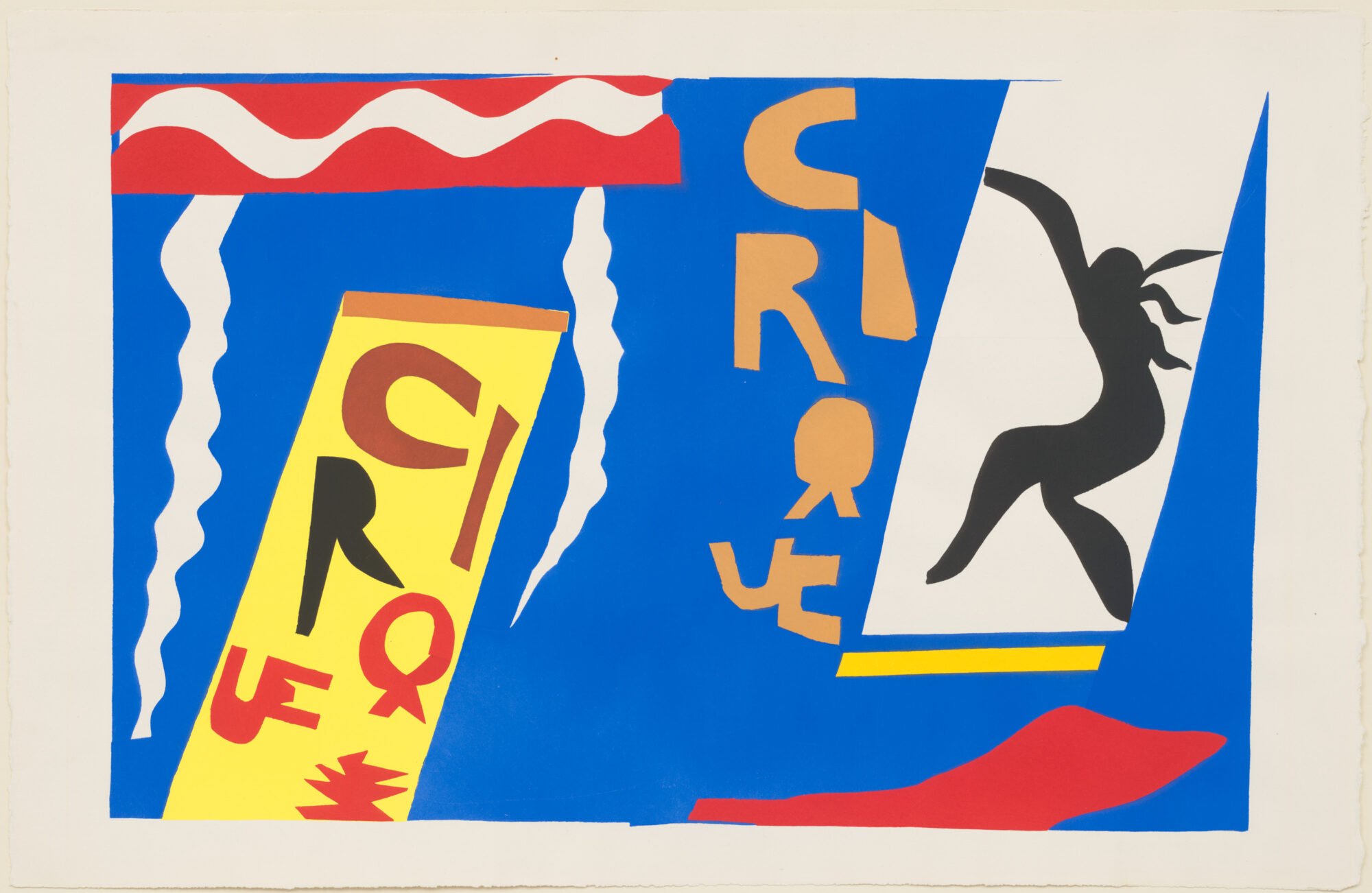
Henri Matisse’s The Swimming Pool (1952) is a skeletal vision of summer. It features only ripples of blue against a tan background, so it’s the viewer who conjures the leaping bodies, the shapes of water, the dance of sunshine.
If future generations are to enjoy this vibrancy, said its steward, New York’s Museum of Modern Art, the work needs to be taken down and kept somewhere dark for a few years. Ever since MoMA’s exhibition that explored Matisse’s cut-outs a decade ago, The Swimming Pool has seemed a permanent fixture at the museum, guaranteed to be on the wall along with masterpieces like Vincent van Gogh’s The Starry Night (1889) or Andrew Wyeth’s Christina’s World (1948).
Installation view of Henri Matisse’s “The Swimming Pool” at the Museum of Modern Art. Photo: courtesy MoMA.
The museum, after all, has long kept it on view after leading a five-year conservation of the gouache-on-paper piece that aimed to restore its original colors. It has hung in a room that matches the dimensions of Matisse’s dining room in Nice, for which it was designed. Ahead of the coming deinstallation, MoMA is hosting a mini reprisal of the 2014 exhibition with “Matisse’s Cut-Outs: A Celebration,” which brings together 10 works famously created by cutting painted paper with scissors.
Matisse turned to crafting these works after undergoing surgery in 1941. “They were initially a means to an end, rather than an end in themselves,” Samantha Friedman, a MoMA curator of prints and drawing, said via email. Painting had become a painful ordeal, and he often worked from bed or in a wheelchair, carefully shaping sheets of paper before having them arranged with the aid of assistants. Matisse may have been old, infirm, and oftentimes irascible, but he found a new mode of expression in his final decade, one of bold color and deceptive simplicity that has only furthered the brilliance of his legacy.
Henri Matisse, Christmas Eve (1952). Photo: MoMA.
He would produce more than 250 paper cut-outs, some, like The Swimming Pool, spanning whole walls, others designed for a single sheet of paper. These experiments began with Jazz (1947), a series of 20 that he created for Verve, a French art magazine. The original title was Circus, and the theme flows through the works in the form of prancing horses and contorted bodies. They were, Matisse said, “lively and violent” images that crystallized “memories of circuses, folktales, and voyages.”
Henri Matisse beside a stained glass at the Chapel of Vence, France, based on a cut-out. Photo: Universal History Archive via Getty Images.
A highlight arrives with Christmas Eve (1952), a seasonal stained-glass window created by French glass master Paul Bony. It’s based on a Matisse cutout (which appears nearby) that was commissioned by Life magazine for its New York headquarters. Scattered with bright, long-limbed stars and blocks of yellow and green, it’s a standard nativity image that gestures towards the increasingly abstract direction Matisse was headed.
“Matisse’s Cut-Outs: A Celebration” runs at the Museum of Modern Art, 11 West 53rd Street, New York, from November 9, 2024–January 20, 2025.